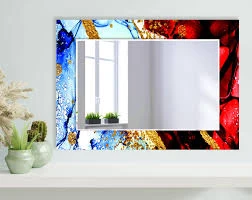

The Advantages of Reflectorized Glass in Modern Architecture
In the ever-evolving landscape of architecture and design, reflectorized glass has emerged as a pivotal element, revolutionizing how buildings interact with their environment. This innovative material not only enhances aesthetic appeal but also offers numerous functional benefits that make it a popular choice among architects and builders alike.
What is Reflectorized Glass?
Reflectorized glass, often referred to as reflective glass, is a type of glass that has been coated with a special layer to enhance its reflective properties. This reflective coating can be produced using various methods, including the application of metallic coatings or sputtered layers. The result is a glass surface that reflects a significant portion of sunlight while allowing some natural light to enter. This characteristic makes reflectorized glass a wonderful option for both commercial and residential structures.
Energy Efficiency
One of the most significant advantages of reflectorized glass is its ability to contribute to energy efficiency. Buildings that incorporate this type of glass can significantly reduce their reliance on artificial lighting and air conditioning. During the day, the reflective properties of the glass minimize heat gain, maintaining a cooler indoor environment. As a result, the energy used for cooling systems can be reduced, leading to lower energy bills and a smaller carbon footprint. In an age where sustainability is paramount, reflectorized glass presents a viable solution for eco-conscious architects and builders.
Aesthetic Appeal
Beyond its energy-saving capabilities, reflectorized glass adds a sleek, modern look to any building. Its reflective surface allows for a dynamic interaction with the surrounding environment, creating a visually striking appearance that changes throughout the day. Whether reflecting the sky, nearby landscapes, or cityscapes, buildings clad in reflectorized glass can create stunning visual effects that enhance their architectural beauty. This versatility makes it suitable for a wide range of styles, from contemporary skyscrapers to classic residential homes.

Glare Reduction
Another benefit of reflectorized glass is its ability to reduce glare. In spaces flooded with natural light, glare can often become an issue, leading to discomfort and even health-related problems. Reflectorized glass minimizes this glare by reflecting sunlight, making indoor environments more comfortable for occupants. This is particularly advantageous in office buildings where a significant amount of screen time is involved. By using reflectorized glass, architects can create spaces that not only look good but also promote well-being and productivity.
Privacy without Sacrificing Light
Reflectorized glass provides an added layer of privacy without completely sacrificing natural light. The reflective coating acts as a barrier, making it more challenging for outsiders to see into the building while still permitting ample sunlight to brighten the interiors. This characteristic is especially beneficial in urban environments where buildings are often in close proximity to one another. Homeowners and businesses can enjoy a certain degree of discretion, all while basking in the benefits of natural illumination.
Durability and Maintenance
In addition to its aesthetic and functional advantages, reflectorized glass is also known for its durability. The coatings used in the manufacturing process are designed to withstand the elements, reducing the need for frequent maintenance. Unlike traditional glass, which may become foggy or scratched over time, reflectorized glass maintains its clarity and visual appeal with minimal upkeep. This long-lasting nature ensures that buildings not only look good upon completion but continue to do so for years to come.
Conclusion
In summary, reflectorized glass is a remarkable advancement in architectural materials that combines beauty, functionality, and sustainability. Its energy efficiency, aesthetic appeal, glare reduction capabilities, privacy options, and durability make it an ideal choice for modern buildings. As architects and designers continue to seek innovative ways to enhance their projects, reflectorized glass will undoubtedly play a significant role in shaping the future of architecture. Whether in bustling urban environments or serene residential neighborhoods, the impact of this material will be felt for years to come, ushering in a new era of construction where form, function, and sustainability work in harmony.